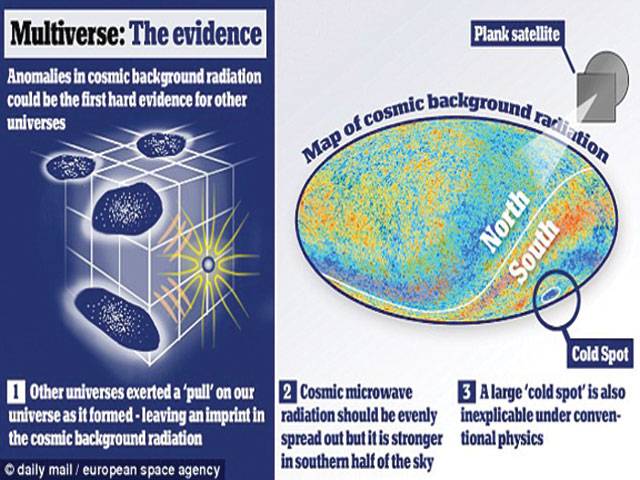DM
Ottawa
The universe could be a bubble amongst a ‘frothy sea’ of other bubble universes, scientists have claimed.
They hope a new series of experiments could shed new light on the ‘multiverse’, which says ours is just one universe among many. Researchers hope it will be a proof of principle and show the multiverse theory can be tested.
Researchers at the Perimeter Institute for Theoretical Physics in Canada say the theory of multiple universes stems from the idea of there being a vacuum in the beginning of time. ‘The vacuum simmered with energy (variously called dark energy, vacuum energy, the inflation field, or the Higgs field).
‘Like water in a pot, this high energy began to evaporate - bubbles formed,’ they explain. Each bubble contained another vacuum, whose energy was lower, but still not nothing. This energy drove the bubbles to expand. Inevitably, some bubbles bumped into each other. It’s possible some produced secondary bubbles.
Each of these bubbles was a universe. ‘In this picture, our universe is one bubble in a frothy sea of bubble universes,’ the teams say. The theory arises from the idea of cosmic inflation that the universe expanded very far very fast after the Big Bang. While this is the most widely accepted theory of universe formation, it has never been proved - something the researchers believe they could change.
‘We’re trying to find out what the testable predictions of this picture would be, and then going out and looking for them,’ said Perimeter Associate Faculty member Matthew Johnson. The researchers have been considering the rare cases in which our bubble universe might collide with another bubble universe.
‘We simulate the whole universe,’ he said. ‘We start with a multiverse that has two bubbles in it, we collide the bubbles on a computer to figure out what happens, and then we stick a virtual observer in various places and ask what that observer would see from there. Simulating the universe is easy,’ he claims.
‘We’re simulating things only on the largest scales,’ he says.
‘All I need is gravity and the stuff that makes these bubbles up. ‘We’re now at the point where if you have a favourite model of the multiverse, I can stick it on a computer and tell you what you should see. Johnson says the program has already reached the point where it can rule out certain models of the multiverse.
‘We’re now able to say that some models predict something that we should be able to see, and since we don’t in fact see it, we can rule those models out.’ For instance, collisions of one bubble universe with another would leave what Johnson calls ‘a disk on the sky’ - a circular bruise in the cosmic microwave background.
That the search for such a disk has so far come up empty makes certain collision-filled models less likely. It’s the first time, the team writes in their paper, that anyone has produced a direct quantitative set of predictions for the observable signatures of bubble collisions.
Thursday, April 18, 2024
Our universe just one bubble in a frothy sea

Caption: Our universe just one bubble in a frothy sea
Hepatitis Challenge
April 18, 2024
IMF Predictions
April 18, 2024
Wheat War
April 18, 2024
Rail Revival
April 17, 2024
Addressing Climate Change
April 17, 2024
Justice denied
April 18, 2024
AI dilemmas unveiled
April 18, 2024
Tax tangle
April 18, 2024
Workforce inequality
April 17, 2024
New partnerships
April 17, 2024
ePaper - Nawaiwaqt
Advertisement
Nawaiwaqt Group | Copyright © 2024





